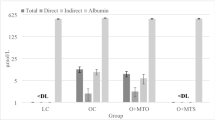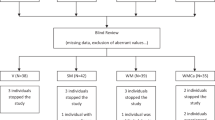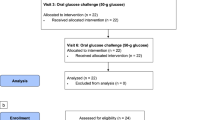Abstract
Background:
The digestion of sphingolipids (SL) is slow and is catalyzed by mucosal enzymes. Dietary SL was shown to inhibit cholesterol absorption and to lower plasma cholesterol, triglycerides (TG) and hepatic fat accumulation in animal models.
Aim:
A dairy formulation based on fractionation of buttermilk, which is enriched in milk polar lipids of which SL account for a large part is now available. In this study, we examined whether this formulation, when ingested with a standard breakfast, exerted a different influence on postprandial lipids than an equivalent control formulation lacking the polar milk lipids.
Methods:
A total of 18 healthy male volunteers aged 22–65 years ingested a high-fat (40 g) standard breakfast together with a milk-like formulation containing 975 mg of milk SL (A) or the control formulation (B). Postprandial levels of TG, total, low-density lipoprotein (LDL) and high-density lipoprotein (HDL) cholesterol, apolipoprotein AI (ApoAI), ApoB, glucose and insulin were measured 1 to 7 h after the meal.
Results:
No difference was seen between experimental and control groups in postprandial levels of TG, insulin, ApoA1 or ApoB. After 1 hour there was a trend of lower cholesterol concentrations in large TG-rich lipoproteins after formulation A.
Conclusion:
The SL-rich buttermilk drink may affect cholesterol concentrations in TG-rich lipoproteins, but has no effect on postprandial TG after a breakfast with butter fat as the major lipid.
This is a preview of subscription content, access via your institution
Access options
Subscribe to this journal
Receive 12 print issues and online access
$259.00 per year
only $21.58 per issue
Buy this article
- Purchase on Springer Link
- Instant access to full article PDF
Prices may be subject to local taxes which are calculated during checkout


Similar content being viewed by others
References
Beil FU, Grundy SM (1980). Studies on plasma lipoproteins during absorption of exogenous lecithin in man. J Lipid Res 21, 525–536.
Duivenvoorden I, Voshol PJ, Rensen PC, van Duyvenvoorde W, Romijn JA, Emeis JJ et al. (2006). Dietary sphingolipids lower plasma cholesterol and triacylglycerol and prevent liver steatosis in APOE*3Leiden mice. Am J Clin Nutr 84, 312–321.
Eckhardt ER, Wang DQ, Donovan JM, Carey MC (2002). Dietary sphingomyelin suppresses intestinal cholesterol absorption by decreasing thermodynamic activity of cholesterol monomers. Gastroenterology 122, 948–956.
Garmy N, Taieb N, Yahi N, Fantini J (2005). Interaction of cholesterol with sphingosine: physicochemical characterization and impact on intestinal absorption. J Lipid Res 46, 36–45.
Knuiman JT, Beynen AC, Katan MB (1989). Lecithin intake and serum cholesterol. Am J Clin Nutr 49, 266–268.
Lopez-Miranda J, Williams C, Lairon D (2007). Dietary, physiological, genetic and pathological influences on postprandial lipid metabolism. Br J Nutr 98, 458–473.
Nilsson A, Duan RD (2006). Absorption and lipoprotein transport of sphingomyelin. J Lipid Res 47, 154–171.
Noh SK, Koo SI (2004). Milk sphingomyelin is more effective than egg sphingomyelin in inhibiting intestinal absorption of cholesterol and fat in rats. J Nutr 134, 2611–2616.
Nyberg L, Duan RD, Nilsson A (2000). A mutual inhibitory effect on absorption of sphingomyelin and cholesterol. J Nutr Biochem 11, 244–249.
O'Brien BC, Andrews VG (1993). Influence of dietary egg and soybean phospholipids and triacylglycerols on human serum lipoproteins. Lipids 28, 7–12.
Patton JS, Carey MC (1981). Inhibition of human pancreatic lipase-colipase activity by mixed bile salt-phospholipid micelles. Am J Physiol 241, G328–G336.
SNF A (2005). Swedish Nutrition Recommendations 2005. Swedish National Food Administration: Uppsala, Sweden.
Summers SA (2006). Ceramides in insulin resistance and lipotoxicity. Prog Lipid Res 45, 42–72.
Vesper H, Schmelz EM, Nikolova-Karakashian MN, Dillehay DL, Lynch DV, Merrill Jr AH (1999). Sphingolipids in food and the emerging importance of sphingolipids to nutrition. J Nutr 129, 1239–1250.
Wat E, Tandy S, Kapera E, Kamili A, Chung RW, Brown A et al. (2009). Dietary phospholipid-rich dairy milk extract reduces hepatomegaly, hepatic steatosis and hyperlipidemia in mice fed a high-fat diet. Atherosclerosis 205, 144–150.
Acknowledgements
This study was in collaboration with ARLA-foods, which include financial support and test-drinks. Other financial supports are grants from the Albert Påhlsson Foundation, Research Funds of the Lund University Hospital, the Swedish Research Council and the Swedish Research Council Formas.
Author information
Authors and Affiliations
Corresponding author
Ethics declarations
Competing interests
The authors declare no conflict of interest.
Rights and permissions
About this article
Cite this article
Ohlsson, L., Burling, H., Duan, RD. et al. Effects of a sphingolipid-enriched dairy formulation on postprandial lipid concentrations. Eur J Clin Nutr 64, 1344–1349 (2010). https://doi.org/10.1038/ejcn.2010.164
Received:
Revised:
Accepted:
Published:
Issue Date:
DOI: https://doi.org/10.1038/ejcn.2010.164
Keywords
This article is cited by
-
Infant milk fat droplet size and coating affect postprandial responses in healthy adult men: a proof-of-concept study
European Journal of Clinical Nutrition (2017)
-
Organization of lipids in milks, infant milk formulas and various dairy products: role of technological processes and potential impacts
Dairy Science & Technology (2015)
-
The role of Complex Lipids in Attaining Metabolic Health
Current Cardiovascular Risk Reports (2014)
-
Effect of dietary sphingomyelin on absorption and fractional synthetic rate of cholesterol and serum lipid profile in humans
Lipids in Health and Disease (2013)



